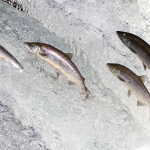A first-of-its-kind report by the U.S. Fishery Management Council has found 72 percent of federal waters could be classified as conservation areas.
The report is one component of U.S. President Joe Biden's “30 by 30” plan, a federal initiative to commit 30 percent of U.S. lands and oceans to conservation by 2030. Conservation areas identified in the report will be included in the American Conservation and Stewardship Atlas, which will measure the progress of U.S. conservation efforts.
“The [council coordination committee] strongly encourages NOAA and other agencies involved in atlas development to incorporate the conservation areas identified in the report,” CCC Chair Greg Stunz said in a statement. “By including these areas in the atlas, the U.S. effectively demonstrates how the councils’ fishery management measures directly result in improved conservation outcomes that benefit sustainable fisheries, other marine species and habitats.”
The eight fishery management councils worked together to compile the report, identifying 648 conservation areas that together comprise 72 percent of federal waters.
"Our subcommittee produced a first-of-its-kind, groundbreaking, and highly detailed analysis of the conservation areas developed by all eight regional fisheries management councils under our authority mandated by the Magnuson-Stevens Act,” CCC Area-Based Management Subcommittee Chair Eric Reid said. “These conservation areas are designed to maintain the productivity and biodiversity of marine ecosystems and balance fishery access to a wide variety of user groups.”
The committee uses a loose definition of conservation areas, including any areas with planned management or regulation of environmentally harmful fishing activities that promotes biodiversity, biological productivity, recreation, and ecosystem function. Nearly a third of federal waters have prohibitions on mobile bottom tending gears, and about half of federal waters have prohibitions on bottom trawling, easily ensuring that a majority of federal waters are considered conserved.
“These findings demonstrate that a large portion of federal waters are protected from fishing activities that could negatively impact the environment,” the U.S. Fishery Management Council said in a statement.
The CCC also developed an interactive dashboard tool that allows users to see what federal waters are currently conserved.
Photo courtesy of U.S. Fishery Management Council







